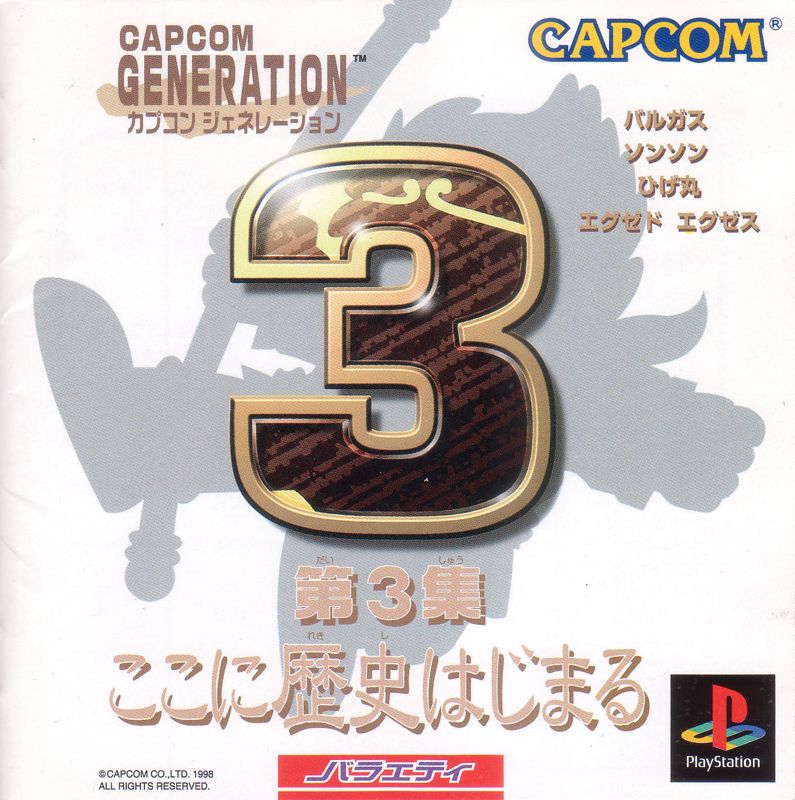Retro Replay Review
Gameplay
Capcom Generation: Dai 3 Shū brings four distinct arcade experiences into one package, each offering a different flavor of classic Capcom gameplay. Vulgus kicks things off as a straightforward vertical shooter, demanding quick reflexes as you weave between enemy formations and blast incoming projectiles. The tight controls and simple power‐up system feel authentic to the 1984 arcade original, providing satisfying risk-vs-reward shooting without modern hand-holding.
Moving from blasting aliens to platform antics, Son Son channels the folklore of “Journey to the West” in a side-scroll action format. You’ll jump between floating platforms, toss projectiles at hordes of patrolling enemies, and grapple with occasional unfair hitboxes. Despite these quirks, the core loop of mastering level patterns and discovering hidden fruit bonuses makes Son Son a delightful break from nonstop shooting.
HiGeMaru (known overseas as Pengo) and Exed Exes round out the set with contrasting mechanics. HiGeMaru tasks you with pushing ice blocks to crush snooty Sno-Bees and earn bonus points, blending puzzle-like thinking with timing-based movement. Exed Exes returns to the shooter mold but spices it up with flanking attacks and mid-level bosses, creating a more varied experience that feels surprisingly modern in its wave design.
Graphics
The visual presentation across all four games remains faithful to the original Capcom arcade boards. Vulgus features chunky, colorful sprites that pop against the inky black background—while the detailing on boss ships may look blocky by today’s standards, there’s undeniable charm in every pixel. Occasional sprite flicker and palette shifts complete the genuine arcade ambiance.
Son Son’s bright, cartoonish art style shines on modern screens, with expressive character animations that make each leap and attack feel weighty. Backgrounds are sparse but feature Japanese scroll motifs and wandering monkeys that enrich the setting without distracting from tight platforming action.
HiGeMaru’s icy arenas and Exed Exes’ alien environments both benefit from Capcom’s bold color choices and distinct sprite outlines. The compilation’s built-in upscaling filters do a respectable job of smoothing edges without blurring detail, making these classics look crisp on LCD or OLED televisions. While purists can toggle filters off, most players will appreciate the gentle enhancement.
Story
Of the four titles, narrative takes a backseat to gameplay—an expected trait in early ’80s arcade design. Vulgus offers a barebones “defeat alien menace” premise, while Exed Exes adds a light sci-fi veneer about rescuing space cruisers from insectoid foes. These setups exist primarily to frame levels rather than deliver deep storytelling.
Son Son stands out by loosely adapting the Monkey King legend, though the plot remains a minimal backdrop for action sequences. You’ll see simple cutscenes of princesses in need of rescue, but the real draw is mastering each stage’s platform puzzles. HiGeMaru’s tale of a mustachioed hero battling ice monsters is similarly straightforward, providing context without slowing the flow.
Where this compilation truly shines in narrative is its historical commentary. The included digital booklet (or on-screen museum) provides developer interviews, concept sketches, and release timelines that flesh out Capcom’s early arcade era. For retro enthusiasts, these background stories elevate the package beyond its arcade origins into a mini time capsule of gaming history.
Overall Experience
Capcom Generation: Dai 3 Shū – Koko ni Rekishi Hajimaru succeeds as both a nostalgia trip for veterans and a window into arcade heritage for newcomers. The selection of genres—shooting, platforming, puzzle—ensures variety, preventing the compilation from feeling repetitive. Each game’s pick-up-and-play design makes it easy to jump in for five minutes or a marathon session.
Performance is rock solid, with rapid loading and responsive input that mirrors arcade controls. Optional display filters, scanline toggles, and button‐mapping options allow players to customize the look and feel to their liking. Though there’s no modern save-state system, generous continue options in all four titles mean you won’t be locked out of late-game levels after failing just once or twice.
In terms of value, the compilation’s modest price point and supplemental history mode make it a compelling purchase for collectors and casual retro fans alike. While purists might lament the lack of bonus soundtracks or video galleries, the core package delivers pure arcade thrills. Ultimately, Dai 3 Shū stands as a worthy tribute to Capcom’s pioneering days—an enjoyable slice of gaming history that remains challenging, fun, and undeniably authentic.
 Retro Replay Retro Replay gaming reviews, news, emulation, geek stuff and more!
Retro Replay Retro Replay gaming reviews, news, emulation, geek stuff and more!




Reviews
There are no reviews yet.